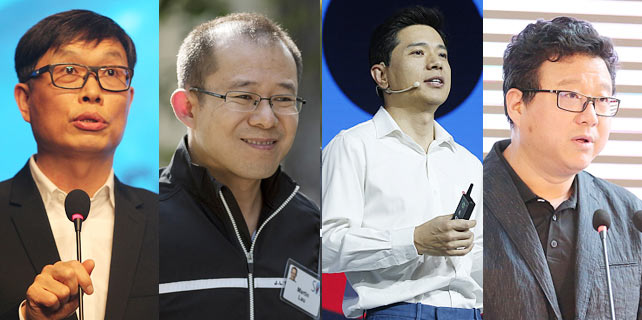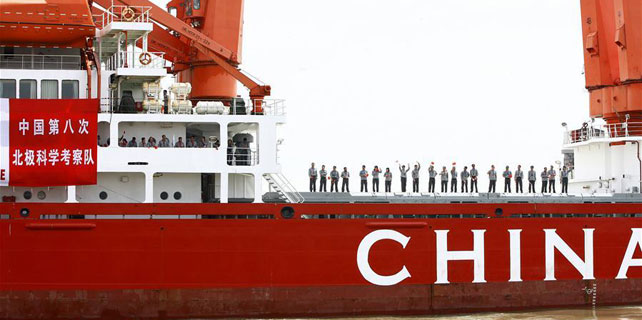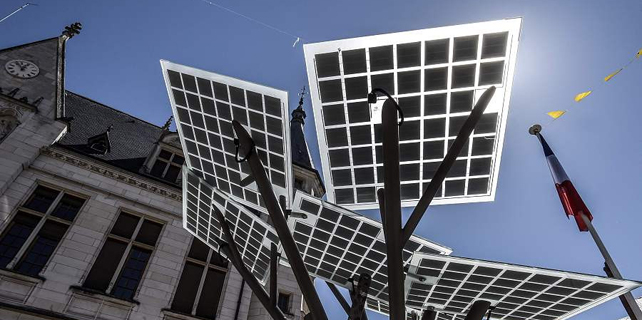Soaking it up
China's green concept of 'sponge cities' to mitigate flood risk and better manage rainwater resources will have applications all over Asia
China is setting a new global standard in urban development that will save cities from flooding by collecting, filtering and storing rainwater.
As one analyst put it recently: "Rainwater is one of the world's most wasted natural resources."
During the monsoon and typhoon seasons, huge amounts of water are dumped across the region, eventually running off into waterways, streams and rivers.
China's urban green development program is changing the concept of city planning. The old focus on concrete and asphalt is being replaced with parks, wetlands and drainage systems that collect, filter and store water underground and take the excess away from built-up areas to deposit it downstream.
"What you are looking at is basically an urban sponge," said Stefan Rau, an urban development specialist with the Manila-based Asian Development Bank (ADB).
China coined the term 'sponge cities' to describe its green urbanization program, Rau told China Daily. He cited Singapore and Tokyo as two outstanding examples of water management in an urban environment.
The Chinese government's 13th Five-Year Plan (2016-20) highlighted water conservation as its first priority in the nation's building infrastructure network. It emphasized that water resource management, water ecology remediation and water environment protection will be the most important elements of infrastructure construction.
The idea behind sponge cities is that districts, residential estates and regions will be developed with storage facilities, filtration basins and wetlands, and roads and sidewalks will have waterpermeable surfaces.
"These measures will be supplemented with modern wastewater systems, suitable adapted industrial areas and public green spaces. According to the planners, the cities will absorb as much water as possible and store it for future use — like sponges," said the Eco-Business website.
"One goal is that at least 70 percent of rainwater will be absorbed through the ground instead of being directed directly to rivers. The program envisages that by 2020 every fifth city in China will have the corresponding infrastructure. By 2030, this will have risen to 80 percent."
Urban specialist Bharat Dahiya said that while 'sponge cities' sounds like a new concept, it has been in practice in Asia for millennia.
"What is currently being done is a reframing of this age-old concept into the context of today's urban realities, like old wine in a new bottle," he said.
A senior adviser with the environment, development and sustainability program at Bangkok's Chulalongkorn University, Dahiya said: "There is huge scope for its use in Asia for enhancing the sustainability of regional urban development that should be promoted and supported."
He said this is particularly important as cities throughout the region face growing challenges from increased incidents of flooding due to the impact of climate change.
"This has led to groundwater depletion often caused by excessive and unregulated groundwater withdrawals, saltwater intrusion in coastal areas, poor water resources management in watersheds (both countryside and cities), and (resultant) water scarcity across the entire spectrum of cities and towns," Dahiya said.
"Given these unprecedented challenges, the importance of the sponge cities concept in the Asia regional urban context cannot be overemphasized, especially vis-a-vis urban policy and planning."
The ADB's Rau agreed, adding: "Asia's cities urgently need to reinvent themselves to become more resilient to the effects of climate change, flooding and water scarcity.
"Well-planned urban green spaces can significantly reduce the risk of floods and manage water resources in a sustainable way, while making cities more liveable and green," Rau said.
"Picture a whole city that absorbs, harvests, stores, filters, purifies and slowly releases rainwater — like a sponge. Rainwater is retained, naturally filtered and cleaned, and then slowly discharged into rivers and drained into the soil. This is the principle of the sponge city.
"You basically combine both gray infrastructure (pipes and drainage systems) with green infrastructure (parks and wetlands).
"By being able to harness water, clean and store it (preferably underground) you can use it during extended dry periods."
He said urban planners, whether in China or elsewhere in the world, will have to make water collection and storage a major part of urban planning.
Bangkok, a city of more than 8 million people, was once known as the Venice of the East with its network of canals the main mode of transport. Today, most of the canals have been filled in and replaced by roads and apartment buildings.
Manila was once called the Paris of the East, but the city, along with its beautiful architecture, was destroyed during World War II by both the Allied and Japanese forces.
The Philippine capital was never rebuilt to reflect its past. Canals and waterways, once used to drain off water following torrential downpours, have become garbage dumps and open sewers.
Jakarta, with a population in excess of 10 million, has also paid a high price for poor urban planning.
The Human Cities Coalition — a public-private partnership of organizations, initiated by a group of Dutch companies and founded in 2016 — said last year that the rapid pace of urbanization in the Indonesian capital has given rise to multiple problems such as floods, traffic congestion, poverty and inequality.
"Jakarta faces some unique water infrastructure challenges due to the 13 rivers that feed into it," the coalition said.
"Large swaths of the city sit below sea level, with some places sinking 25 cm per year (on average 5-10 cm). This means flooding and the ensuing pollution are a constant — if not life-threatening — challenge for the many low-income inhabitants that currently call places like North Jakarta home."
As in many Asian cities, floods can occur in Jakarta for various and overlapping reasons, such as rivers brimming with garbage, waste-choked waterways, high levels of river sedimentation, and overflowing seawater.
Rau said there is "very little you can do with older, established cities. But with new urban developments, you can adopt the sponge or green infrastructure approach."
One sponge city program backed by the ADB is in Pingxiang, in East China's Jiangxi province. With a population of nearly 2 million, the city has seen a rise in the frequency and severity of floods since 1998.
Major floods between 1998 and 2014 affected more than 496,000 people, caused the collapse of more than 2,600 houses, and resulted in significant economic losses in agriculture.
A flood that struck the city on May 25, 2014 caused an estimated $115 million in economic losses. Inadequate sewer systems and wastewater treatment have also severely affected water quality and the wider environment.
The Jiangxi Pingxiang Integrated Rural-Urban Infrastructure Development Project will protect floodplains, restore wetlands and create wider green spaces along rivers.
"Through such initiatives, the project aims to address in a connected manner key challenges of flooding, river pollution, untreated wastewater and lack of rural-urban linkages," the ADB said.
"Embankments and wetlands along rivers will be rehabilitated and landscaped, helping to cleanse rainwater runoff. Rural embankments are planned as agriculture shelterbelts with edible crops, and flood-resilient farming will include training for farmers in advanced organic crop growing.
"Public greenways along the rivers will create open spaces with enhanced water and rainwater management."
Since its launch by the central government in April 2015, China's sponge cities program has so far included 30 cities and regions. Each of these municipalities receives an annual grant of at least 400 million yuan ($58.6 million).
According to Lu Kehua, vice-minister of the Ministry of Housing and Urban-Rural Development, 130 cities across the country already have plans to be converted into sponge cities.
Michael Zhao, an associate and expert in water management in the Shanghai office of global urban designers Arup, said: "In China, the climate is bringing more rain in summer. From June to September, there will be high density rainfall which is bringing up urban planning problems.
"There's already been very serious flooding for four or five years each summer," Zhao told The Guardian newspaper. "You will see flooding in more and more cities. As urbanization brings more people to those cities, the problem becomes worse and worse."
















